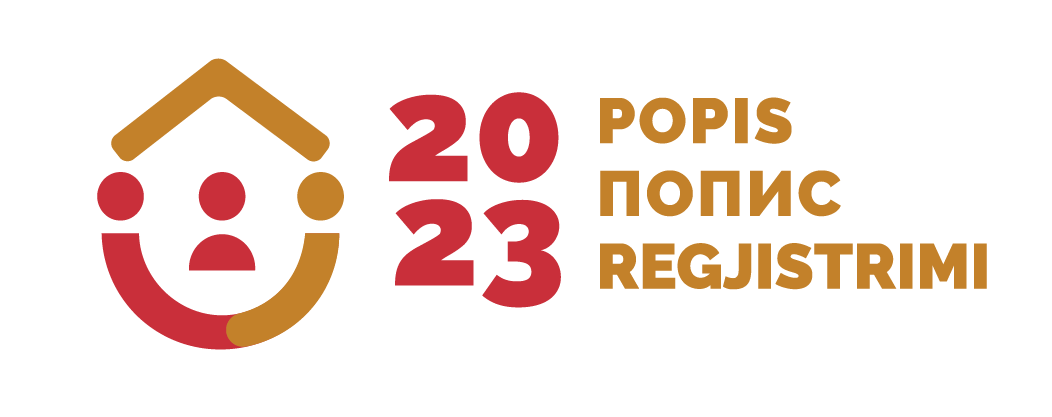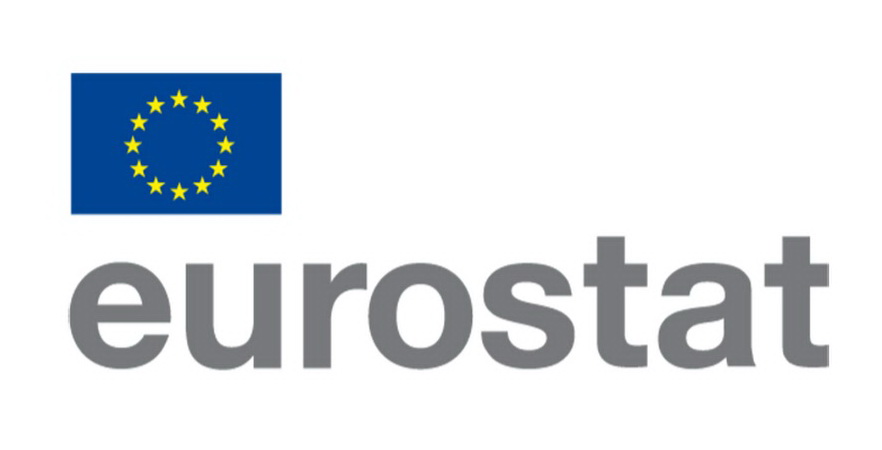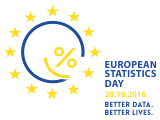| Category: |
Economic statistics |
| Area: |
Prices |
| Survey / data collection: |
Price Index of Industrial Products from Import |
Note: For any question on metadata, please contact MONSTAT metadata support.
| 1. Contact Vrh |
| 1.1. Contact organization: |
Statistical Office of Montenegro - MONSTAT |
| 1.2. Contact organization unit: |
Department for Price Statistics and Foreign Trade |
| 1.2. Contact organization unit: |
IV Proleterske 2, 81000 Podgorica, Montenegro |
| 2. Metadata update Top |
| 2.1. Metadata last certified: | 19 December 2023 |
| 2.2. Metadata last posted: | 29 December 2023 |
| 2.3. Metadata last update: | 19 December 2023 |
| 3. Statistical presentation Top |
| 3.1. Data description: | The purpose of import price indices survey is to collect data on monthly price changes of industrial products from import. Price indices of industrial products from import represent important economic indicators which can be used as an inflation measure; as time series deflators, especially for the needs of national accounts and as a tool for adjusting prices when concluding various sales contracts. |
| 3.2. Classification system: | NACE Rev. 2, CPA Version 2008 |
| 3.3. Sector coverage: | Indices are calculated for the following sections of industrial activity: B (Mining and quarrying), and C (Manufacturing) according to NACE Rev. 2 classification. |
3.4. Statistical concepts and
definitions: | Purchase price of industrial products from import is the price of a good delivered at the frontier of the importing country, including transportation costs, insurance charges, and any other costs incurred to that point (CIF price) that influence on the unit price of a product.
Price indices of industrial products from import are relative numbers that show changes in producer prices from period to period. Price indices are calculated for certain products (individual indices), for groups of products and for all products included in the list (total index).
The monthly index shows by how much on average prices in the current month changed in comparison with the previous month.
The quarterly index shows by how much on average prices in the current quarter changed in comparison with the previous quarter.
The annual index shows by how much on average prices changed in the last 12 months.
The average annual index shows by how much on average prices changed in the last n months of the current year compared to the same period of the previous year. |
| 3.5. Statistical unit: | Reporting units are enterprises - importers of industrial products covered by sections B (Mining and quarrying) and C (Manufacturing) of NACE Rev. 2. |
| 3.6. Statistical population: | Reporting units are enterprises - importers of industrial products covered by sections B (Mining and quarrying) and C (Manufacturing) of NACE Rev. 2. |
| 3.7. Reference area: | Price index of industrial products from import covers the whole territory of Montenegro. |
| 3.8. Time coverage: | Data in the form of monthly releases are available from 2011:
http://monstat.org/eng/page.php?id=423&pageid=28 |
| 3.9. Base period: | The previous year is used as the base year. |
| 6. Institutional mandate Top |
6.1. Legal acts and other
agreements: | The Law on Official Statistics and Official Statistical System (Official Gazette of Montenegro No 18/12 and 47/19) defines provisions for collection, processing, and dissemination of data.
The Law provides to the Statistical Office legal powers to collect and access the data necessary for the implementation of Programme and Annual Plan.
The Law gives a priority to the use of administrative data and right of access to individual data that are a result of survey of other official statistical producers.
As an annex to legal provisions, Statistical Office has signed several memoranda on cooperation with administrative data providers. |
| 6.2. Data sharing: | Signed agreement on cooperation with the official statistical producers:
1. Ministry of Finance
2. Central Bank of Montenegro
3. Trilateral agreement (MONSTAT, Ministry of Finance, and Central Bank of Montenegro)
International institutions:
1. EUROSTAT
2. UN organizations
3. IMF
4. World Bank |
| 7. Confidentiality Top |
| 7.1. Confidentiality - policy: | Articles 53-60 of the Law on Official Statistics and Official Statistical System (Official Gazette of Montenegro No 18/12 and 47/19) provide a framework for protection, use, and transmission of confidential data. Statistical office has produced two comprehensive rulebooks that cover the procedures for individual data protection as well as keeping individual records. With purpose of the meeting legal framework on functioning of security system and statistical confidentiality there was adopted the Rulebook on Keeping Statistical Data by which Manner, Time, Technical Conditions and Organization of Statistical Data Storage to Prevent Their Destroying, Misappropriation, and Unauthorized Use is Regulated as well as the Rulebook on Contents and Manner of Keeping Records on Users of Individual Statistical Data by which contents and manner of keeping records on users of individual statistical data is regular.
Pursuant to the Article 59, an access to the confidential data is limited to persons performing duties and tasks of official statistical producer and up to the stage the data are necessary for official statistical production. Persons that performs duties and tasks within official statistical producers must sign the statement on respecting the principle of confidentiality.
Law on Official Statistics and Official Statistical System is aligned with the Regulation No 223/2009 and the Regulation (EU) 2015/759 from 29 April 2015 that also regulate confidentiality provisions.
The Government of Montenegro adopted the Statement on Commitment of Confidence in Official Statistics (Commitment of Confidence). |
7.2. Confidentiality - data
treatment: | Employees of the Statistical Office of Montenegro sign confidentiality statements and legal actions are foreseen for the intentional violation of the confidentiality of statistical data.
Article 54 of the Law on Official Statistics and Official Statistical System (Official Gazette of Montenegro No 18 /12) stipulates that the data collected, processed and stored for the purposes of official statistics are considered confidential, if it is possible, on the basis of these data, to directly or indirectly identify reporting units, thus reveal individual data. The reporting unit is directly identified by name, address, or by the assigned identification number. If the reporting units gave explicit consent for the use of specific data, that data shall not be considered confidential. |
| 8. Release policy Top |
| 8.1. Release calendar: | The Law on Official Statistics and Official Statistical System (Official Gazette of Montenegro No 18/12) stipulates that official statistical producers prepare, update, and publish Statistical Release Calendar. It is published on the website of Statistical Office not later than 20 December for the next year, for all official statistical producers that includes date of releasing statistical data. Any change in date of releasing in the Calendar is published in advance in accordance with the Procedure on Unplanned Revisions. |
| 8.2. Release calendar - access: | Statistical Release Calendar is available on the following link:
http://www.monstat.org/eng/page.php?id=12&pageid=12 |
| 8.3. User access: | General aim of official statistical producer is to meet the needs of users, and to make an access to statistical data to users in an understandable manner, simultaneously and under the same conditions. Statistical Office is obliged to produce and disseminate official statistics in objective, transparent and professional manner, so that all users are equally treated. |
| 10. Accessibility and clarity Top |
| 10.1. News release: | Data are available in the form of monthly releases on the official website:
http://monstat.org/eng/page.php?id=423&pageid=28
From 2021 data are published in form of quarterly releases, and monthly data are available in Monthly Statistical Review on the following link:
https://monstat.org/eng/publikacije_page.php?id=1747 |
| 10.2. Publications: | Statistical Office publishes the following regular publications:
1. Statistical Yearbook,
2. Montenegro in figures,
3. Monthly statistical review.
In addition to the above regular ones, Statistical Office publishes also additionally publications. Some of the most important additional publications are as it follows:
1. Women and Men in Montenegro,
2. The most often used statistical data.
All publication published by Statistical Office are available at the following link: http://monstat.org/eng/publikacije.php |
| 10.3. Online database: | Monthly releases from January 2011:
http://www.monstat.org/eng/page.php?id=423&pageid=28 |
| 10.4. Micro-data access: | The Law on Official Statistics and Official Statistical System (Official Gazette of Montenegro No 18/12) regulates rules under which external users can obtain an access to individual data for needs of research. Article 58 defines types of scientific and research organizations that can obtain such data. Providing individual data without identifier is possible only upon a written request of scientific and research institutions, with purpose of performing scientific and research activities as well as international statistical organizations and statistical producers from other countries.
Research entity signs the agreement with Statistical Office, and it signs the statement on respecting the confidentiality principle.
Official statistical producers keeps a separate records on users and purpose of using the statistical data given to these users. |
| 10.5. Other: | Data on import price indices are regularly (monthly) submitted to Eurostat via the web portal eDAMIS. |
10.6. Documentation on methodology:
domain: | Short methodology of survey is available on the next link:
http://www.monstat.org/eng/page.php?id=28&pageid=28 |
| 10.7. Quality documentation: | The Law on Official Statistics and the Official Statistical System ("Official Gazette of Montenegro" No. 18/12 and 47/19) defines the commitment to quality, which ensures that producers of official statistics in Montenegro work and cooperate in accordance with international principles of quality of the statistical system.
In accordance with the ESS Quality Declaration, Article 338 of the Treaty on the Functioning of the EU, Regulations 759/2015 and 223/2009 and the European Statistics Code of Practice, the following documents are adopted:
1. Quality Strategy of the Statistical Office
2. Guide for the implementation of the Quality Strategy in the Statistical Office;
3. Implementation plan |
| 11. Quality management Top |
| 11.1. Quality assurance: | Statistical Office has chosen the implementation of elements of TQM (Total Quality Management) model that foster development and improvement of functioning of:
- Institution,
- Official statistical result production, and
- Individual.
Within middle-term deadline, Statistical Office has chosen the TQM implementation through the following objectives:
1. Strong commitment to users and other interested parties,
2. Quality statistical processes and products,
3. Professional orientation of staff members,
4. Constant improvements,
5. Reduction of overburden of reporting units.
Producer price index of industrial products from import is very relevant for domestic and international users, as well as internally for the needs of national accounts. The aim is to gather reliable research data and provide a high level of accuracy. The calculation of the index is based on the recommended international methodology. Publishing of the results is always accurate, timely and easily accessible. The aim is to ensure international comparability using the EU and relevant international concepts, definitions and classifications. |
| 11.2. Quality assesment: | Not available. |
| 12. Relevance Top |
| 12.1. User needs: | International users:
- Eurostat,
- World Bank,
- UN organizations,
- International Monetary Fund.
National users:
- Ministries and other public administration bodies,
- Local government, and other local government bodies,
- Non-governmental organizations,
- Students,
- Researchers,
- Media. |
| 12.2. User satisfaction: | The Statistical Office has adopted the Quality Management Strategy, the Guidebook to the Implementation of the Quality Management Strategy, as well as the Plan for the Implementation of the Quality Policy.
In order to measure the degree to which fulfills obligations towards users and within the new quality policy, the Statistical Office conducted User satisfaction survey.
The results of the survey are available on the Statistical Office website, link: http://monstat.org/uploads/files/2.%20Izvjestaj%20o%20zadovoljstvu%20korisnika%20ENG%20(Autosaved).pdf |
| 12.3. Completeness: | All national requirements are fulfilled. |
| 13. Accuracy and reliability Top |
| 13.1. Overall accuracy: | The accuracy of Price index of industrial products from import is generally considered to be high. The accuracy of source data is monitored by assessing the methodological soundness of price and weight sources and the adherence to the methodological recommendations. Appropriate actions are taken to identify and eliminate potential sources of errors. |
| 13.2. Sampling error: | Sampling error can not be calculated because the survey was not conducted on the basis of a random sample. |
| 13.3. Non-sampling error: | The response rate is about 70%. Depending on their size or representatives, companies are contacted by phone in order to provide data on time. The price of the temporarily unavailable product is determined by contacting the company from which it is required to estimate/assess the missing price or to repeat the last declared price. In cases when the product of a certain quality for which the prices are collected is not imported, or if the product of that quality is "non-market goods" then a new product of the specified quality is defined, which is most imported and it is expected to be imported for a long time and in large quantities. Prices for the new selected quality product are given simultaneously for the current and previous month. Companies are obliged to explain any change in quality. |
| 14. Timeliness and punctuality Top |
| 14.1. Timeliness: | Data are published on the date defined by the Statistical Release Calendar - quarterly. |
| 14.2. Punctuality: | All data are published according to Statistical Release Calendar 2022. |
| 15. Coherence and Comparability Top |
15.1. Comparability -
geographical: | The methodology of survey is compliant with the EU regulations to a great extent, which makes it comparable between the countries. |
| 15.2. Comparability over time: | Data according to NACE Rev. 2 Classification are available from January 2011. |
15.3. Coherence - cross
domain: | Not available. |
| 15.4. Coherence - internal: | The data are internally coherent. Higher levels of aggregation are derived from elementary indices according to pre-defined procedures. |
| 17. Data revision Top |
| 17.1. Data revision - policy: | Statistical Office has adopted the revision policy and it is available on the website:
http://www.monstat.org/eng/page.php?id=1411&pageid=1411 |
| 17.2. Data revision - practice: | Published data are considered as final, except in the case of methodological changes and the introduction of new classifications, when they are subjected to revision. |
| 18. Statistical processing Top |
| 18.1. Source data: | The main source of data for calculation of the price indices of industrial products from import is the Monthly survey on the prices of industrial products from imports. This survey includes companies - importers of industrial products covered by sections of mining and quarrying and manufacturing of the NACE Rev. 2 classification, with more than five employees that meet the unit of measurement prescribed by the Nomenclature of industrial products per unit of product. Sample and weights are based on foreign trade survey. The sample is determined by three criteria: selection of products with significant import values; selection of enterprises importing these selected products, selection of representative items in cooperation with the reporting units. |
18.2. Frequency of data
collection: | Monthly. |
| 18.3. Data collection: | Reporting method is used for data collection. Questionnaires are filled by reporting units between the 14th and 16th of each month for the current month. Purchase price of industrial products from import is the price of a good delivered at the frontier of the importing country, including transportation costs, insurance charges, and any other costs incurred to that point (CIF price) that influence on the unit price of a product. |
| 18.6. Adjustment: | Adjustment of data is not made. |







